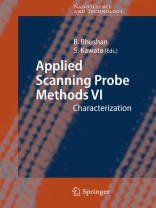The scanning probe microscopy ?eld has been rapidly expanding. It is a demanding task to collect a timely overview of this ?eld with an emphasis on technical dev- opments and industrial applications. It became evident while editing Vols. I–IV that a large number of technical and applicational aspects are present and rapidly – veloping worldwide. Considering the success of Vols. I–IV and the fact that further colleagues from leading laboratories were ready to contribute their latest achie- ments, we decided to expand the series with articles touching ?elds not covered in the previous volumes. The response and support of our colleagues were excellent, making it possible to edit another three volumes of the series. In contrast to to- cal conference proceedings, the applied scanning probe methods intend to give an overview of recent developments as a compendium for both practical applications and recent basic research results, and novel technical developments with respect to instrumentation and probes. The present volumes cover three main areas: novel probes and techniques (Vol. V), charactarization (Vol. VI), and biomimetics and industrial applications (Vol. VII). Volume V includes an overview of probe and sensor technologies including integrated cantilever concepts, electrostatic microscanners, low-noise methods and improved dynamic force microscopy techniques, high-resonance dynamic force – croscopy and the torsional resonance method, modelling of tip cantilever systems, scanning probe methods, approaches for elasticity and adhesion measurements on the nanometer scale as well as optical applications of scanning probe techniques based on near?eld Raman spectroscopy and imaging.
Spis treści
Scanning Tunneling Microscopy of Physisorbed Monolayers: From Self-Assembly to Molecular Devices.- Tunneling Electron Spectroscopy Towards Chemical Analysis of Single Molecules.- STM Studies on Molecular Assembly at Solid/Liquid Interfaces.- Single-Molecule Studies on Cells and Membranes Using the Atomic Force Microscope.- Atomic Force Microscopy of DNA Structure and Interactions.- Direct Detection of Ligand-Protein Interaction Using AFM.- Dynamic Force Microscopy for Molecular-Scale Investigations of Organic Materials in Various Environments.- Noncontact Atomic Force Microscopy.- Tip-Enhanced Spectroscopy for Nano Investigation of Molecular Vibrations.- Investigating Individual Carbon Nanotube/Polymer Interfaces with Scanning Probe Microscopy.












